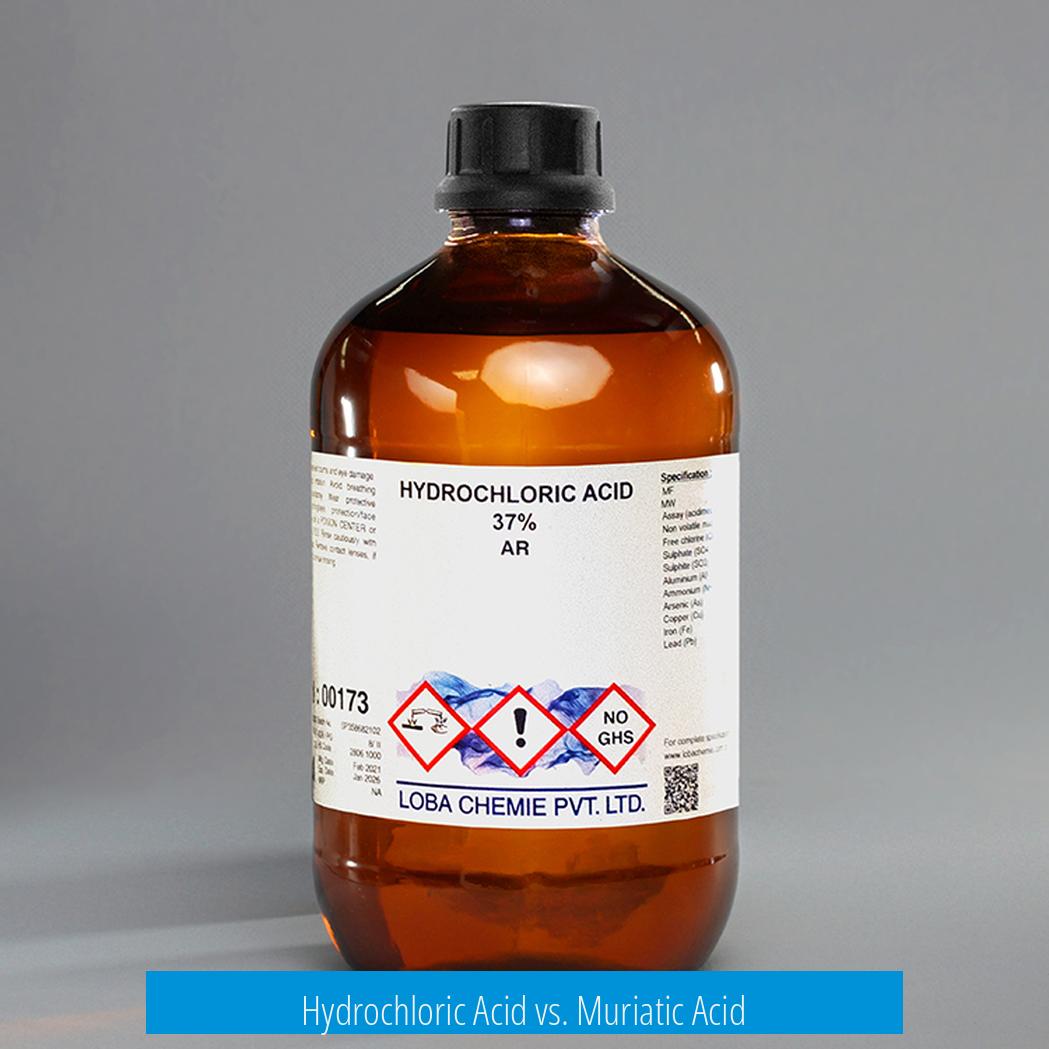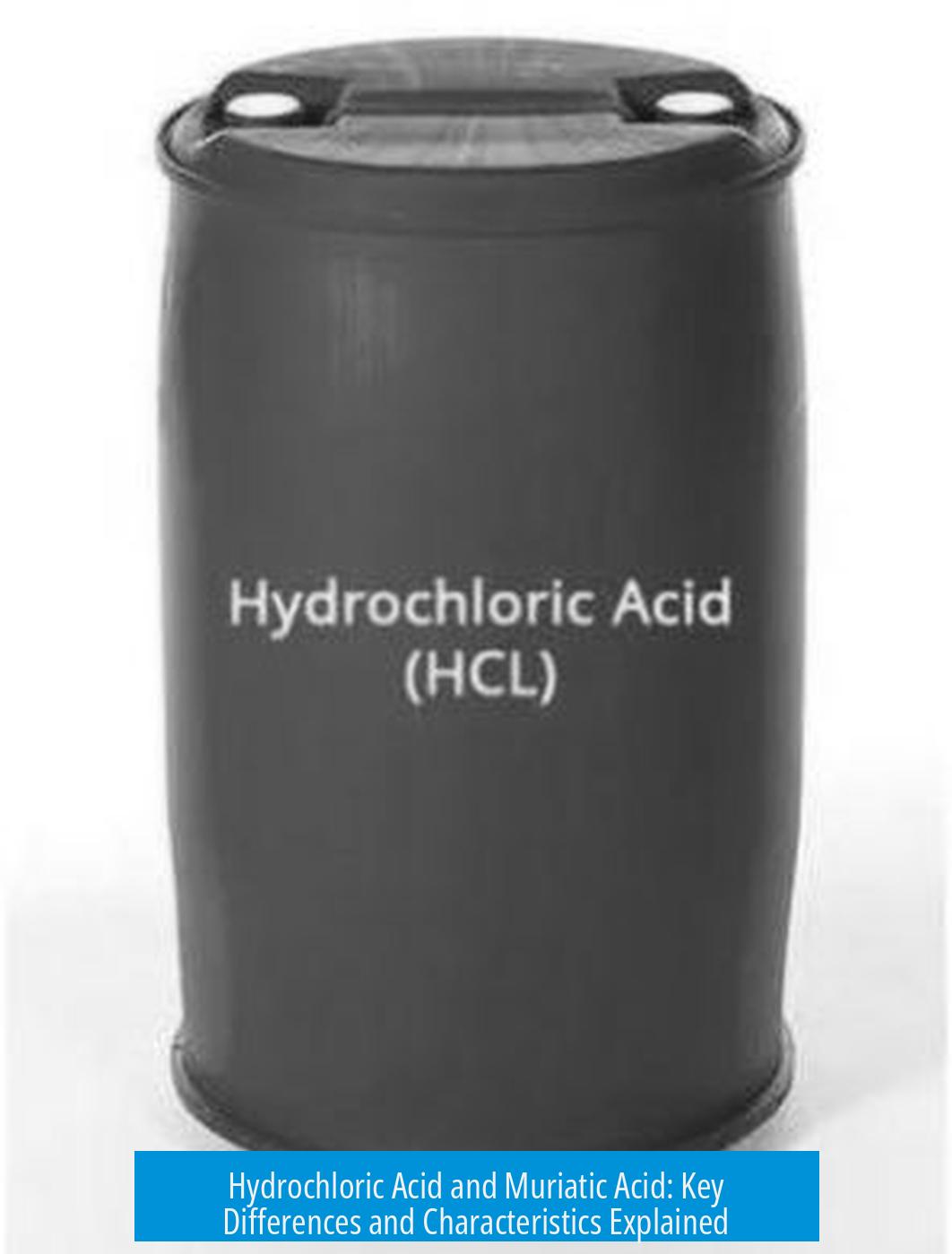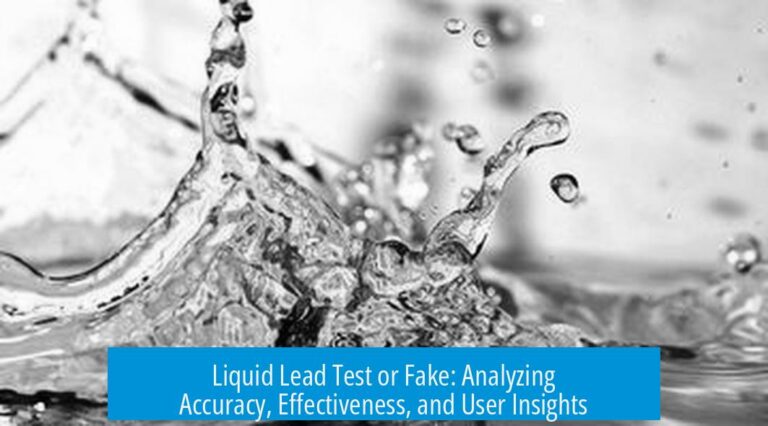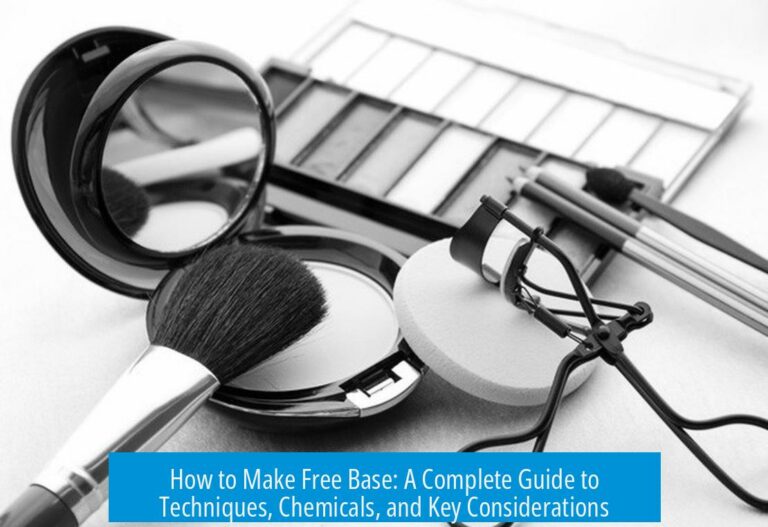Hydrochloric Acid vs. Muriatic Acid

Hydrochloric acid and muriatic acid are essentially the same chemical compound, hydrogen chloride dissolved in water. The main differences lie in their naming, purity levels, and typical usage contexts.
Terminology and Naming
Muriatic acid is an older, industrial term for hydrochloric acid. Chemistry and laboratory settings predominantly use the term hydrochloric acid, whereas tradespeople, such as those in metallurgy and construction, often say muriatic acid. The distinction is largely historical and contextual rather than chemical. Similar to how methanol is called wood alcohol in older texts, the choice between names is a matter of preference and tradition.
Purity and Concentration
Muriatic acid typically has lower purity and concentration compared to lab-grade hydrochloric acid. Industrial muriatic acid often contains impurities and ranges around 10 molar concentration. This concentration varies depending on the manufacturing process. By contrast, purified hydrochloric acid for laboratory or chemical use tends to have higher concentration and well-defined purity levels. Despite these differences, muriatic acid works effectively for many diluted solution needs in labs and industrial applications.
Physical Characteristics and Composition
- Muriatic acid generally has a yellowish tint due to small amounts of iron(III) chloride and other by-products introduced during production.
- Hydrochloric acid, especially high purity grades, is usually clear and colorless.
Commercial muriatic acid is widely used in household cleaning, especially in Europe, alongside common agents like ammonia and bleach.
Summary Table of Differences
| Property | Hydrochloric Acid | Muriatic Acid |
|---|---|---|
| Common Use | Laboratories, chemical synthesis | Industrial cleaning, construction |
| Purity | High, defined | Lower, variable |
| Concentration | Variable, can be very concentrated | Typically around 10M |
| Appearance | Clear, colorless | Often yellowish due to impurities |
| Naming Context | Science and chemistry | Trades, metallurgy, industry |
Key Takeaways
- Muriatic acid is an older, industrial name for hydrochloric acid.
- They are chemically the same substance; differences arise from purity, concentration, and use.
- Muriatic acid contains more impurities and usually is less concentrated.
- Hydrochloric acid is preferred in scientific contexts for its higher purity.
- Color differences result from impurities like iron(III) chloride in muriatic acid.
What is the difference between hydrochloric acid and muriatic acid?
Muriatic acid is an older name for hydrochloric acid. The main difference lies in purity. Muriatic acid is often less pure and used in industrial settings, while hydrochloric acid is the term used in labs and chemistry.
Why does muriatic acid appear yellowish compared to hydrochloric acid?
Muriatic acid often has a yellow tint because of impurities like iron(III) chloride from the manufacturing process. Pure hydrochloric acid usually appears clear without such coloration.
Is muriatic acid as strong as hydrochloric acid?
Muriatic acid typically has a lower concentration than lab-grade hydrochloric acid. Most muriatic acid is around 10 molar, making it suitable for general use but less pure than concentrated hydrochloric acid.
Where is muriatic acid commonly used?
Muriatic acid is popular in industrial work and household cleaning, especially in Europe. It’s often found alongside other common cleaners like ammonia and bleach.
Can muriatic acid be used in laboratory settings?
Yes, muriatic acid can be diluted for lab use. It is often used to prepare weaker hydrochloric acid solutions, though pure hydrochloric acid is preferred for precise experiments.





Leave a Comment